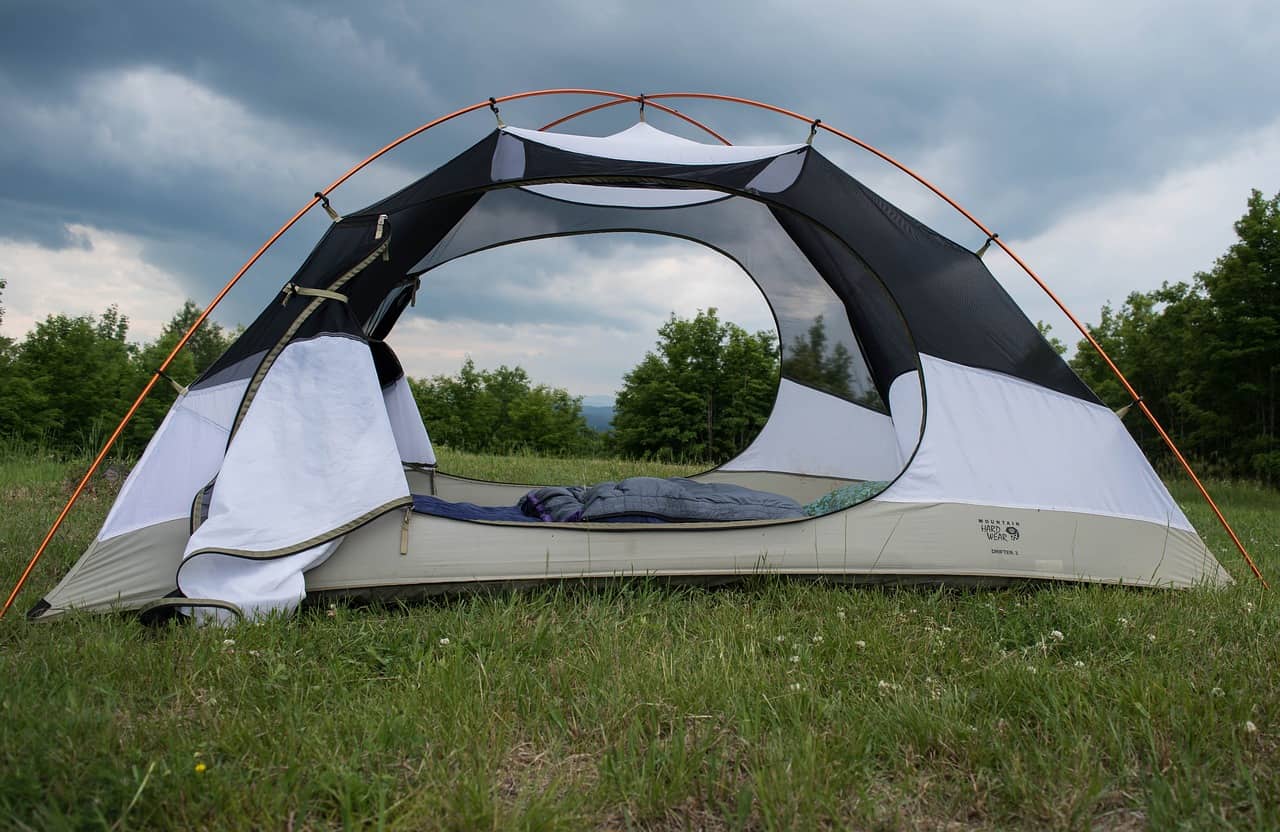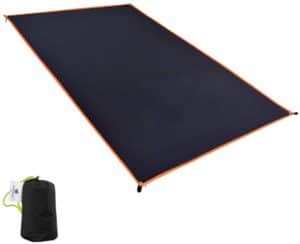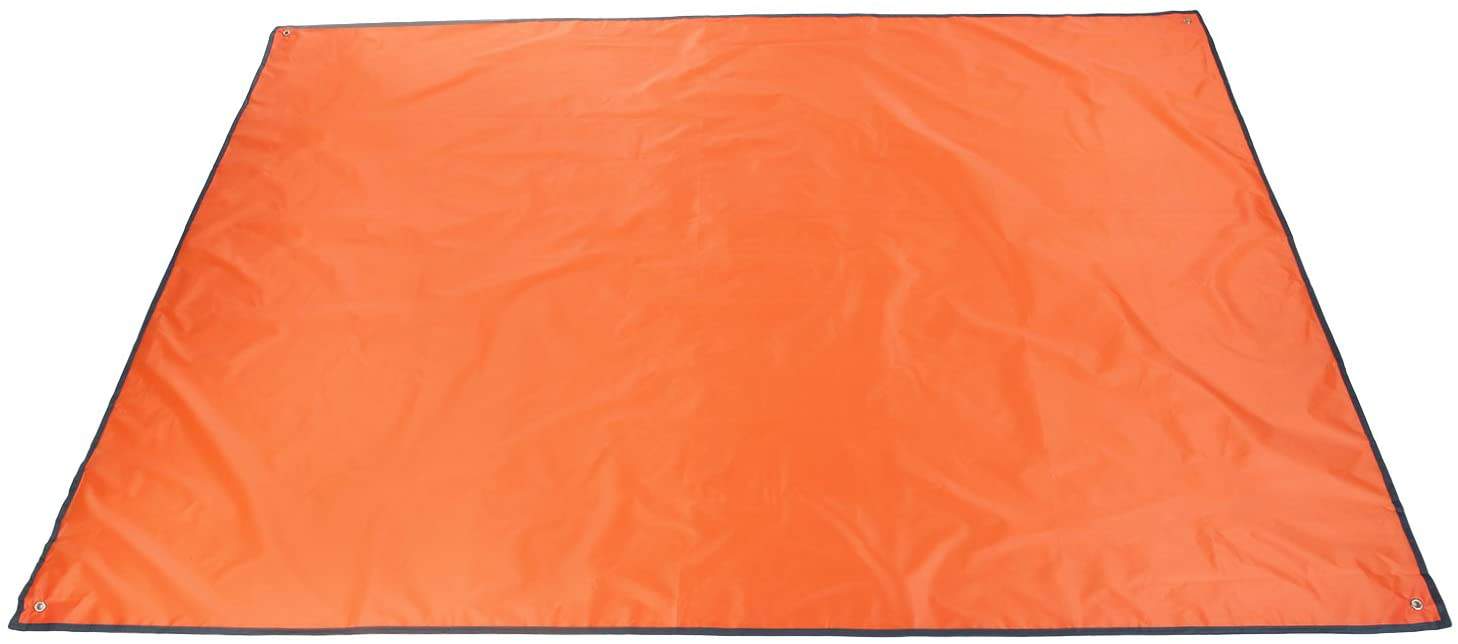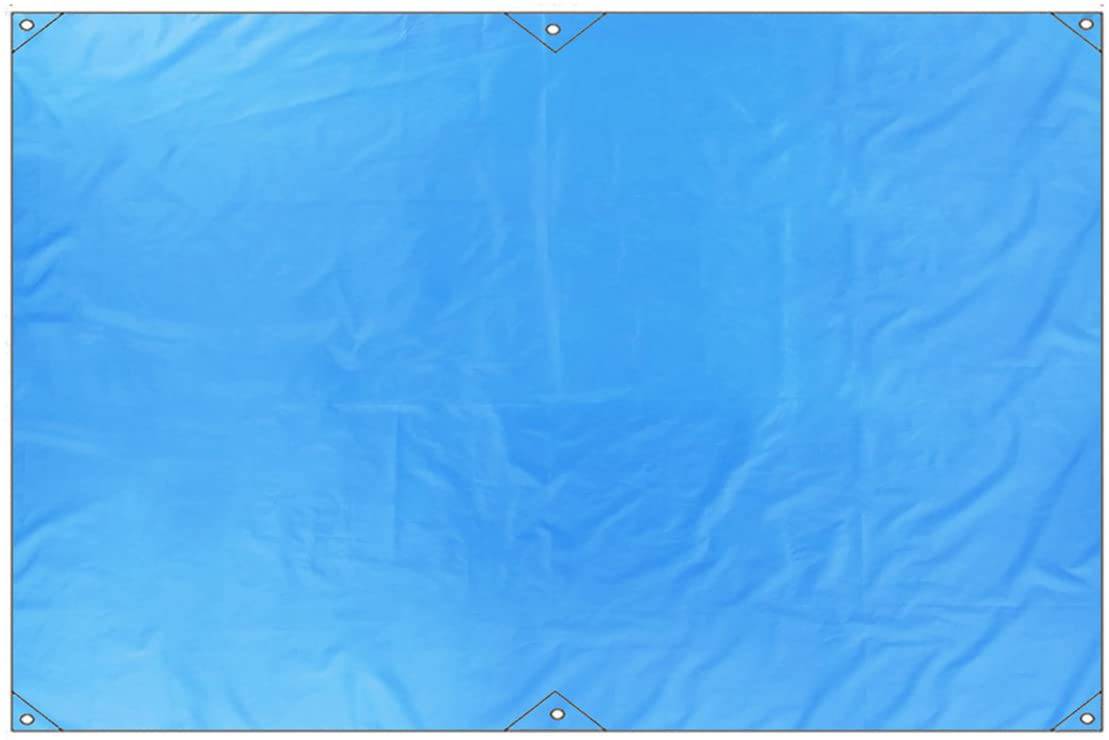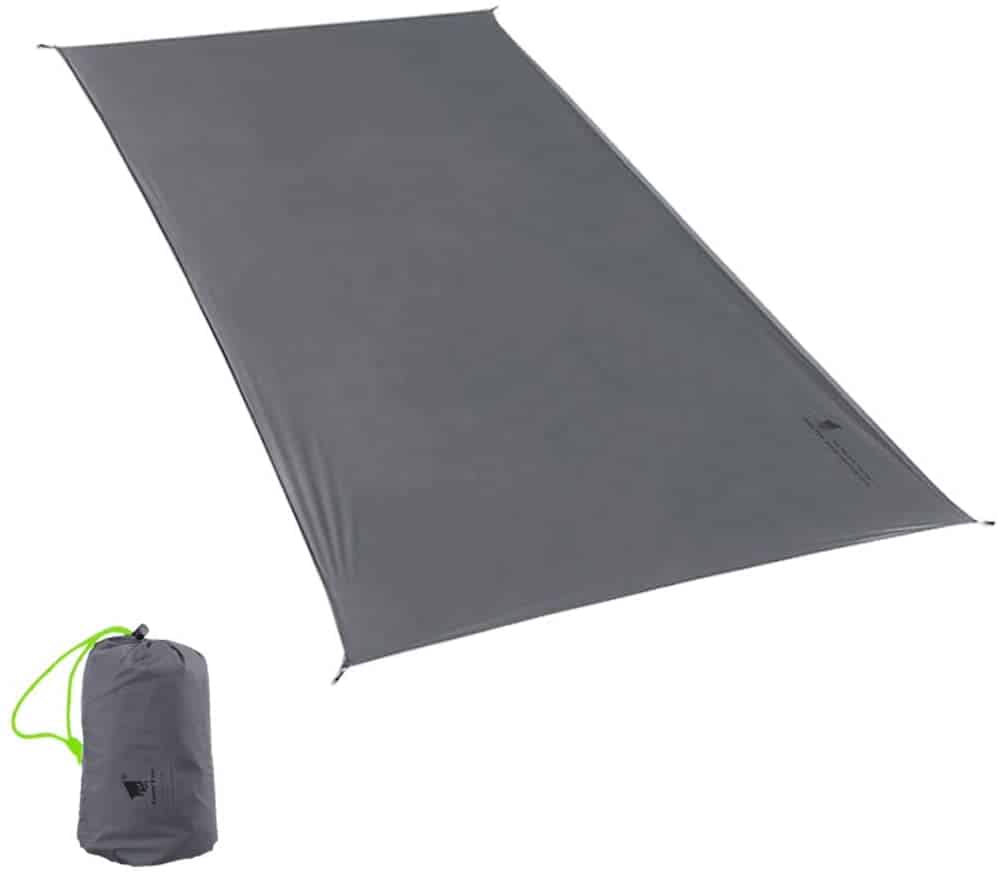Tent footprints are a great piece of camping equipment that every camper should have in their camping gear.
However, with so many different tent footprints on the market today, you might be wondering what you should look for when choosing a tent footprint, what makes a good tent footprint, and which tent footprints are the best?
In order to help you choose the best tent footprint for your particular needs, we created this helpful tent footprint guide to let you know not only what to look for and how to choose a tent footprint. But also to let you know which tent footprints are the best tent footprints currently on the market today.
Best Tent Footprints
While you might think all tent footprints are pretty much the same, they actually come in all different sizes and also have many different features that set them apart from one another. Because of this, we chose several different tent footprints to make sure that no matter what your needs are, you are sure to find the best tent footprint for you.
GEERTOP 1-4 Person Waterproof Tent Footprint
- Why It’s Great: Best Waterproofing
- Size: Available in Multiple Sizes
- Material: 20D Nylon Cloth
- Weight: 5.7 ounces
While most tent footprints or groundcovers are waterproof to a certain extent this tent footprint by GEERTOP takes it to a whole new level, by coating the fabric with silicone, giving the footprint one of the highest waterproof ratings of PU8000MM.
The fabric used for this tent footprint is 20D Nylon which is well known in the camping community as a quality and rugged material that holds up well to the stresses of camping.
This tent footprint also has built-in grommets as well as straps at each of the corners allowing you to stake the footprint down or use it as a shelter using trekking poles (not included).
To check the price of this waterproof tent footprint by GEERTOP on Amazon click here.
OUTAD Waterproof Camping Tarp
- Why It’s Great: Cheapest
- Size: Available in Multiple Sizes
- Material: 210D Oxford Fabric
- Weight: 11 to 17 ounces (depending on size)
This compact and durable camping tarp or tent footprint is a great choice if you’re looking for a budget-friendly or cheap tent footprint to use while camping.
This tent footprint is one of the cheapest tent footprints that we could find on the market that still maintained a good level of quality and durability.
Don’t let the cheap price of this tent footprint fool you though because even though it’s one of the cheapest on the market it’s still really well made and has some nice features such as 210D oxford fabric, waterproof capabilities, available in multiple colors, as well as a convenient storage bag.
Also, thanks to the multiple available sizes of this tent footprint, ranging from small (87 inches by 150 inches), medium (87 inches by 180 inches, and large (87 inches by 240 inches) you are sure to find just the right size tent footprint.
To check the price of this ultra-affordable and budget-friendly tent footprint on Amazon click here.
REDCAMP Ultralight Tent Footprint
- Why It’s Great: Most Compact Storage
- Size: Available in Multiple Sizes
- Material: 210T Ripstop Polyester Fabric
- Weight: 14 Ounces
If you’re looking for a lightweight and ultra-compact tent footprint to go with your ultra-lightweight tent for backpacking or hiking then this footprint by REDCAMP makes a great choice.
This tent footprint packs down so small that you could actually put it in your pocket if you wanted to.
Even though it packs down small though it still provides plenty of protection from the ground because of its 210D ripstop polyester fabric creating a durable and dry barrier to place your tent on while camping and hiking outdoors.
In addition, this tent footprint also comes with tie-down loops at each corner as well as pockets that allow you to weigh down each corner in case you don’t want to use stakes.
Overall this tent footprint is a great choice for any backpacker or camper that wants to keep his or her gear as light and compact as possible and still have a reliable tent footprint while at the campsite.
While this tent footprint does come in varying sizes, as a trade-off to its compact size, please be aware that most of the sizes are best suited for a small or single-person tent.
To check the price of this lightweight and ultra-compact tent footprint for backpackers and hikers on Amazon click here.
Winis Waterproof Camping Tent Tarp Footprint
- Why It’s Great: Most Durable
- Size: 85 inches by 85 inches
- Material: 420D Oxford Fabric
- Weight: 16 Ounces
While most tent footprints using oxford fabric typically have a 210D rating which is 210 Denier for short, this tent footprint uses 420D oxford fabric making it especially durable and resistant to rips or punctures. (for a more detailed explanation of Denier see the below buyer’s guide)
Even though this tent groundsheet uses super heavy-duty material though it still comes in at a respectable weight of only 16 ounces.
In addition, there are also grommets at all four corners of the footprint allowing you to stake down the footprint as well as use it as a shelter. At 85 inches by 85 inches it’s also a pretty good size allowing you to accommodate most 2 and 3 person tents.
To check the price of this durable tent footprint by Winis on Amazon click here.
TRIWONDER Waterproof Hammock Rain Fly Tent Tarp Footprint
- Why It’s Great: Most Versatile
- Size: Available in Multiple Sizes
- Material: 420D Oxford Fabric
- Weight: 16 Ounces
This tent footprint by TRIWONDER is one of the most versatile footprints on this list as it also makes an excellent rain tarp or shelter thanks to its multiple grommets located around the tarp.
While its common for tent footprints to have four grommets at each corner so that it can be staked out, the medium and large sizes of this tent footprint actually have six grommets, allowing you to raise the middle of the tarp with the use of poles (not included) in order to create a shelter from the elements.
In addition, this particular tent footprint not only comes in different sizes and colors but it also comes in two different versions including a version that is just the tent footprint or a version that includes the tent footprint as well as stakes and guylines to provide the ultimate in versatility.
Another great feature of this tent footprint is that it uses 420D Oxford cloth just like the one above providing a ton of durability and ruggedness ensuring that this footprint will stay in good shape no matter what you throw at it while camping.
To check the price of this versatile tent footprint on Amazon click here.
If you’re a backpacker or hiker and your primary concern is camping light and the weight of the tent footprint then this ultra-lightweight tent footprint by GEERTOP is definitely one you should check out.
While the weight of the footprint does vary depending on the size you choose, the smallest size which should accommodate most 1 person tents comes in at only 3 ounces which is the lightest footprint by far that we could find.
Even though this tent groundsheet is super lightweight though it’s still plenty rugged and tough enough to handle just about anything you can throw at it.
This ground tarp is also completely waterproof. In fact, thanks to the silicon waterproof coating the manufacture applied to the nylon fabric, this footprint has a waterproof rating of PU5000MM meaning that it could actually hold water if you filled the tarp with water.
This footprint also has loops at all four corners so that you can easily stake the footprint down or suspend it in the air as a rainfly if you wanted to.
To check the price of this ultra-lightweight tent footprint by GEERTOP on Amazon click here.
How to Choose the Best Tent Footprint
When choosing the best tent footprint or groundsheet for your needs there are many things you need to take into consideration to ensure you select the best one including the size and weight of the footprint, the type of material the footprint uses, the level of waterproofing the footprint offers, and the features and versatility of the footprint.
In order to help you choose the best tent footprint for your needs, we will go over each of these parameters as well as a few other common questions to make sure that you know everything you need to know about tent footprints.
Tent Footprints Size and Weight
One of the most important criteria to consider when choosing your tent footprint is the size of the footprint itself as choosing the right size footprint can make all the difference.
This is because if you choose a tent footprint that is too small for your tent it won’t provide the full and adequate protection you need and if you choose a tent footprint that is too large for your tent then you end up adding unnecessary bulk and weight to your camping gear as well as potentially causing water to collect around and underneath your tent if it rains.
So to help you choose the appropriate size tent footprint based on the size of your tent we created this helpful table.
However, remember that this table is just a general guide, as tent sizes and shapes do vary from one tent to another. So make sure to check your specific tent dimensions before selecting a tent footprint in order to ensure you choose the best tent footprint for your specific tent.
| Size of Tent | Recommend Tent Footprint Dimensions |
| 1 Person Tents | 35 inches by 85 inches |
| 2 and 3 Person Tents | 65 inches by 85 inches |
| 4 Person Tents | 100 inches by 85 inches |
Tent Footprint Weight
The tent footprint’s weight is largely impacted by the size and thickness of the tent footprint you choose. As larger and thicker tent footprints will obviously weigh more than smaller and thinner ones.
So when considering the weight of the tent footprint it’s important to keep in mind the level of protection you need and choose a tent footprint that offers just the right amount of protection without being overkill to help keep the weight and pack size of the tent footprint to a minimum.
While as stated above the weight of a tent footprint can vary greatly depending on the size, you ideally want to keep the tent footprint below 20 ounces regardless of the size you need to keep the footprint light.
Tent Footprint Materials

There are many different types of materials used for tent footprints but the most common include nylon, polyester, and Oxford fabric.
While all of these materials have their differences the common thread among them all is that they are all synthetic. Synthetic materials are typically used for tent footprints because they are lighter, more durable, and more waterproof compared to natural ones.
To be honest with you there is not a lot of difference in performance or weight regardless of whether you choose nylon, polyester, or Oxford fabric as they are all durable and lightweight materials.
Using Denier to Determine Durability
Instead, you should focus more on the Denier number of the footprint material which is usually abbreviated as “D”. For example, in a tent footprint product description, you might see the tent footprint material listed as “210D Oxford fabric or 20D nylon cloth”.
Denier is simply the weight and thickness of the individual threads used in the fabric. So the higher the Denier number the heavier and thicker the threads are in the material which means the more durable and reliable the material will be.
Keep in mind though that each type of fabric will have a different Denier number range so you can’t compare the Denier number between different types of fabric.
You can, however, compare the Denier number between different footprints that use the same material. For example, a tent footprint that uses 420D Oxford fabric is using a thread that is twice as thick compared to a tent footprint that uses 210D Oxford fabric, which means the first tent footprint should be much more durable with all else being the same.
When reviewing tent footprint materials also keep a lookout for the term “ripstop” as a material with ripstop technology will be especially resilient to tears or rips. This is because ripstop material uses a technique of sewing a stronger cross thread at regular intervals into the fabric to create a kind of grid pattern that makes the material stronger and more resilient to tears and rips.
Waterproofing and Tent Footprints
While most tent footprint materials are naturally waterproof, they are typically treated with a chemical or silicone in order to make them more waterproof.
There are two main types of waterproofing applied to tent footprints including silicone or (SIL) and polyurethane or (PU). While they both provide excellent waterproofing, there are some differences in how they are applied as well as different benefits and drawbacks for each.
To better understand the different types of waterproofing coatings for tent footprints as well as their pros and cons see the below definitions of each.
- Silicone Waterproofing – Silicone waterproof coatings are typically applied to nylon and usually penetrate the material completely, allowing the fabric to stretch more and become more resilient to tearing. Silicon also repels water so it’s each to shake excess water off the footprint if it accumulates on it. On the downside silicon waterproof coatings typically will make the material less breathable and it is also a more costly form of waterproofing.
- Polyurethane Waterproofing – Polyurethane coatings are typically applied to the outside of polyester and nylon to enhance their waterproofing capabilities. This type of waterproofing is a more affordable and cheaper waterproofing and has greater breathability when compared to silicone waterproofing. But polyurethane waterproofing does not increase the strength of the fabric and has a tendency to wear off and break down over time.
When comparing one tent footprints waterproof capabilities to another the higher the number in regards to waterproofing the better so a tent footprint rated at PU8000MM is twice as waterproof as a tent footprint with a waterproof rating of PU4000MM.
Tent Footprint Features and Versatility

While you might think that all tent footprints features are pretty much the same. The fact is there can be a lot of differences between tent footprints in regards to features and versatility.
For example, some tent footprints have grommets or loops or a combination of both at each corner that allow you to not only stake the footprint down but also to use the footprint as a rainfly or shade from the wind and sun by attaching ropes or poles to the grommets.
Some tent footprints even have pockets sewn into each corner allowing you to weigh down each corner with a rock or something heavy when it’s not practical to stake the footprint down or when you want to use it as a beach or picnic blanket.
So while you should choose your tent footprint based mainly on its size, durability, and waterproof capabilities. Be on the lookout for those bonus features that can help separate similar tent footprints when trying to decide on which one to buy.
Is It Worth Getting a Tent Footprint?
One of the most common questions from campers in regards to tent footprints or ground covers is whether or not you actually need one at all?
While there is some debate in the camping community about whether a tent footprint is really necessary. Most campers including myself believe a tent footprint is an important and vital piece of camping equipment that every camper should have.
The reason why most campers believe it’s important to use a tent footprint is due to the numerous benefits that it provides such as protecting the delicate fabric on the bottom of your tent from abrasions and punctures, providing an additional layer of waterproofing to help keep you and your tent dry, as well as providing an additional thermal barrier between you and the cold ground.
How Big Should the Tent Footprint Be?
While some campers like the tent footprint to be slightly larger than the tent itself, as it gives them an additional area to place wet or muddy items outside the tent that they don’t want inside there is one major drawback to this, which is rain.
This is because, if the tent footprint is larger than the tent itself and it starts raining the tent footprint will start collecting water, potentially allowing water to run underneath the tent, eliminating one of the major benefits of additional waterproofing that a tent footprint provides.
Because of this when picking out the size of your tent footprint it’s best to pick a size that is just slightly smaller than the tent itself to avoid collecting water when it rains.

